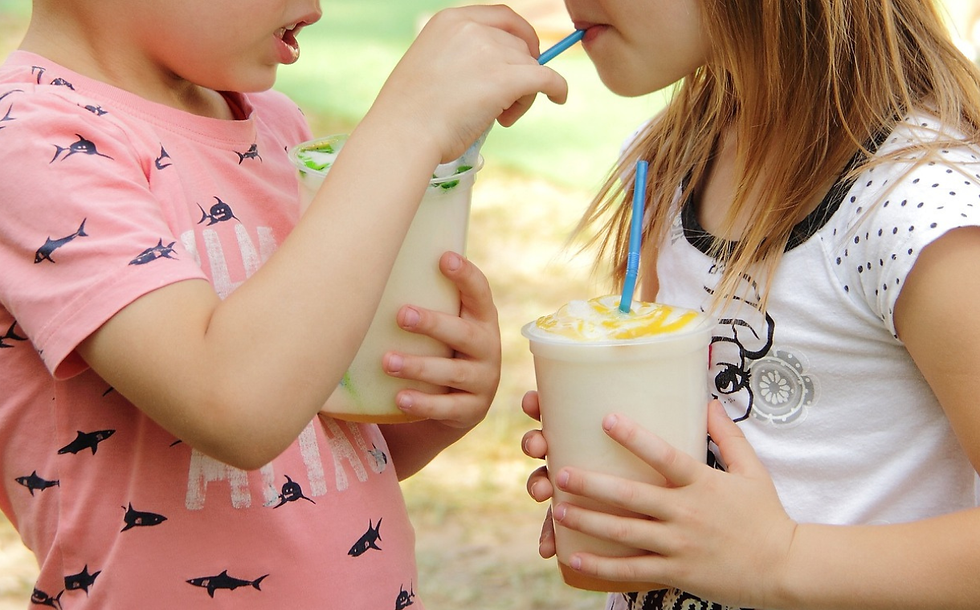The latest news, trends, analysis, interviews and podcasts from the global food and beverage industry
In the super-competitive world of food and beverage products targeted at children, striking the delicate balance between on-pack appeal to parents (the shoppers and providers) and children (the consumers) presents unique and constantly evolving challenges for brand owners. Much of this can be attributed to rapid shifts in parenting attitudes, heightened awareness surrounding nutritional and dietary values and claims, new marketing regulations and the evolving expectations that today’s kids have from the brands they engage with. Scott Mason, head of strategy at brand design agency StormBrands, tells us more.
Parents are still finding themselves having to counter the relentless influence of unhealthy food marketing that targets children. They shoulder the responsibility of making informed choices for their kids and ensuring their wellbeing in a world awash with temptations and distractions.
A year on from regulatory shifts and the situation has improved a little – according to Kantar, non-HFSS (high in fat, salt and sugar) lines are gaining popularity. But ‘pester power’ is still alive and well. Action on Sugar says there are still scores of examples of cereals and yogurts that contain ‘unnecessary amounts of sugar’ and have packaging that targets children through the use of cartoons, characters and vibrant colours.
In the middle of this complex landscape, however, a unique opportunity has emerged for brands to position themselves as parents’ allies. The pressing question that brands now face is: How can brand strategy and packaging design carefully manage the delicate parent-child balance while still working to accelerate market share?
It’s a tightrope walk between reassuring parents that their kids are making healthy choices, and capturing the imaginations of children who seek engaging experiences with their chosen brands. Nowhere is this challenge more pronounced than in juice-based drinks, where product packaging often carries conflicting information about what constitutes a healthy consumption choice. What, no fruit? Juice-based drinks have been subject to increased scrutiny for a while now. Not surprising when one considers that two-thirds of the 34 sweetened drinks analysed in the Children’s Drink Fact Report contained no juice, yet images of fruit appeared on 85% of the packages. Most drinks which did contain juice capped the amount at 5%.
The report also found that in the US, kids between the ages of two and 11 saw twice as many ads for sweetened drinks than for beverages without added sugar. Savvy consumer base We’re seeing these tactics start to change, however, as brands navigate the shifting sands of parenting dynamics and knowledge. Today, brands need to adapt to the modern parent’s increased savviness regarding nutritional and dietary values, all while catering to a new generation of children whose expectations for brand engagement have evolved significantly.
Parents, as providers and protectors, are increasingly seeking products that align with their values and expectations. They yearn for clarity amid the cacophony of marketing messages, seeking out products that genuinely promote their children’s health and wellbeing. And it’s their discerning gaze that brands are increasingly seeking to meet.
But, simultaneously, brands need to capture the hearts and minds of children, the consumers who will ultimately enjoy the products. These young audiences, equipped with a voracious appetite for novelty and interactive experiences, demand much more than mere taste appeal. So brand designers have to provide engaging content that resonates within their social circles and enhances their learning and development.
For the strategic brand partner, the key mission is to harmonise these diverse perspectives. The authentic brand experience should be a combination of elements that provide clarity and assurance to parents while offering excitement and social appeal to children when the product is on shelf and in hand. It is a multifaceted endeavour that challenges brands to innovate, educate and inspire.
Modern consumer needs
PAI Partners’ global chilled juice brand Tropicana managed this balancing act effectively with its recent global launch of Tropicana Kids Smoothies. It understood the resulting design system needed to respond to key motivators for parents and children.
For parents, that required providing information and cues about the quality of the ingredients, as well as nutritional and sustainability factors. Beneficial credentials – ‘one of five a day’, ‘No added sugar’, ‘Boosted with vitamin C’ – feature on the outer carton, and the real-fruit nature of the product is also celebrated. Children benefited from personality-led messaging and fun information, like ‘mandarins can get sunburn’ and ‘a pineapple is actually a berry’.
Transparency and growth
There’s no denying that momentum is growing for products that help parents protect the health of future generations. According to Report Linker, the children’s food and beverage market is poised to reach $146 billion by 2025, with healthy options adding momentum to its growth. But right now, there’s still considerable confusion around marketing messaging and what constitutes healthy. For brands to stay ahead, they need to engage with parental concerns and children’s needs – the trick is using brand strategy and design in a way that achieves this while accelerating appeal and growth.





.jpg)